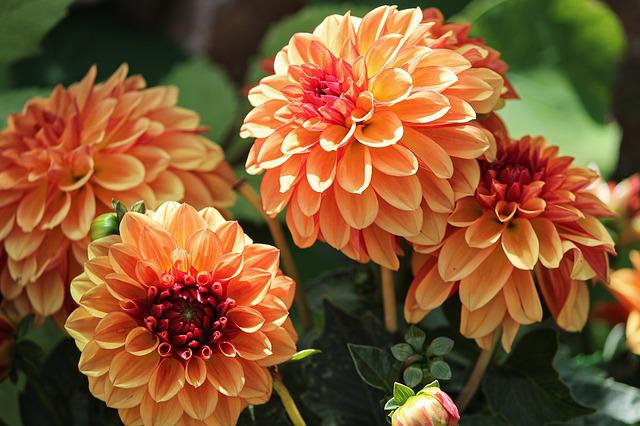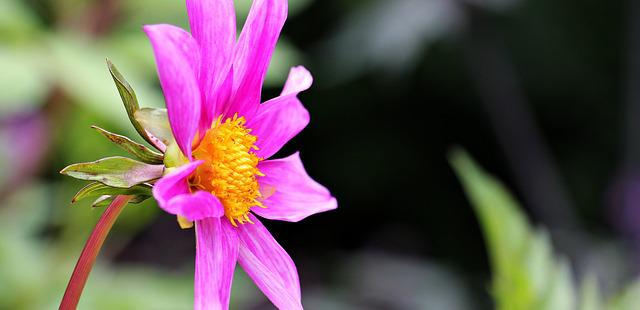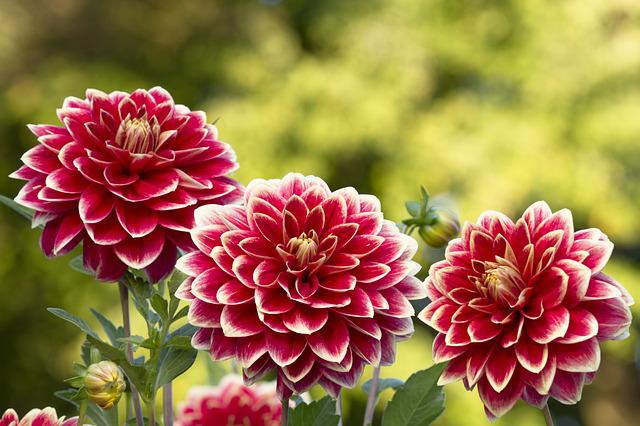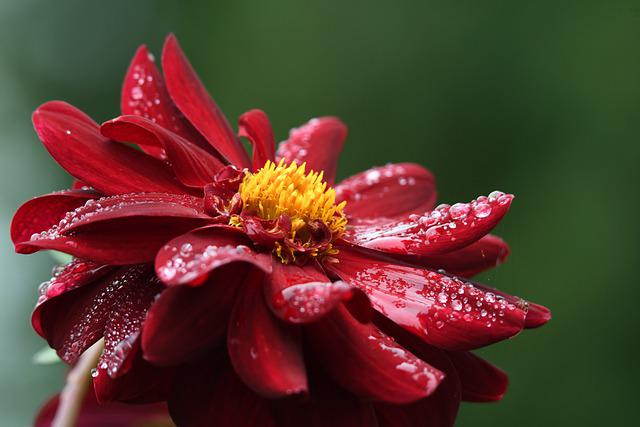The Dahlia Flowering Season —The Ultimate Guide For Gardeners

Dahlias are among the most popular flowers in the world, and for a good reason! They’re versatile and beautiful, and their petals come in various colors and patterns. Unfortunately, the dahlia flowering season isn’t exactly predictable – it can last anywhere from 6 to 12 weeks, and multiple factors can influence its length. This blog is designed to help gardeners know when dahlias are in season and provide detailed information about the different types of dahlias in bloom. Whether planting dahlias for the first time or growing them as a regular part of your garden, this guide will help you get the most out of this flowery beauty!
Table of Contents
How Long Does the Dahlia Season Last?
The duration of the dahlia season is entirely dependent on the climate in the region. The dahlia season can, however, last up to five months in many areas. Dahlias will continue to bloom until a frost kills them.
Dahlias can bloom for longer using a variety of techniques. Some of these will extend Dahlias’ blooming season in the fall, while others will encourage them to bloom earlier in the year.
Dahlia tubers can be planted in a warm indoor location to extend the growing season. This will give the plants a head start while it’s still cool outside. Allowing the tubers to sprout and grow indoors will give them a head start on flowering. They can bloom well into the fall if covered with protective coverings.
When Are Dahlias in Season?
Dahlias come in various colors and styles and are perfect for any gardening enthusiast. However, the dahlia flowering season is not the same worldwide. So, before you plant your dahlias, you must know when they are in season in your area. You can find dahlias at garden centers during this time or order them online. Once you’ve selected a few dahlias, it’s time to start planting!
Dahlias are typically in bloom during the summer and early fall months. Dahlia tubers cannot be planted until the ground is approximately 60 degrees Fahrenheit warmer in the spring.
It will take ten to sixteen weeks for the flowers to bloom after the tubers have been planted. In many locations, this means that the dahlia season begins in July. The majority of dahlias will continue to bloom until the first fall frost. Dahlias will continue to bloom in many locations until the middle or end of autumn. Even if you do not experience frost where you live, less light during the winter will cause dahlia blooms to diminish.
Factors Influencing the Dahlia Season

Climate
Climate is one of the most important factors to consider when planting dahlias. The ideal daily average growing temperature for dahlia is between 68-72°F (20-22°C). A minimum nighttime temperature of 60°-64°F (15°-17°C) is required. Spring is the season when they flower the most, but you can still enjoy their lovely petals all fall. If your climate isn’t compatible with Dahlias (for example, if it gets below freezing during the winter), then you can plant them in a container outside during warmer months. Always check the weather forecast before planting any plants – sometimes late frosts can kill off Dahlia plants prematurely!
Dahlias are classified as perennial plants, but they cannot withstand temperatures below 50 degrees. As a result, gardeners who live in growing zones eight or lower typically need to replant dahlia tubers every spring.
Gardeners must wait until the air and the soil has warmed up before planting dahlia tubers because the tubers are not resistant to cold temperatures. If they plant the tubers before they are ready, there is a chance that they will be damaged or even perish.
Before you plant your dahlia tubers on the ground outside, it is best to follow the general rule of waiting until the date of the final expected frost has passed. In addition to this, you need to hold off until the soil temperature has reached sixty degrees.
Dahlias will not bloom in cooler regions until much later in the year because the soil will not warm up until much later. However, cooler areas can catch up to warmer regions by pre-sprouting dahlias indoors before transplanting them outside.
In addition, a late frost can be the cause of setbacks for dahlias. As a result, dahlias can bloom earlier in the spring if the weather is warmer than usual. Last but not least, frosts typically arrive in cooler regions earlier than in warmer areas. As a result, you can anticipate dahlias to continue blooming well into the fall season in the warm areas.
Environment
The environment is also a big factor to consider when planting dahlias. Remember that these flowers love plenty of sun and well-drained soil. Installing a fence around your garden can help keep them indoors while providing additional sunlight exposure. If you live in an area with heavy clay soils, adding compost or other organic matter to the soil before planting will improve drainage and increase fertility levels. Finally, water liberally throughout the growing season.
Pruning
Pruning dahlias is an important part of the gardening process. By trimming them, you will help prolong their bloom period and get the most out of their beauty. Here are a few tips on how to prune dahlias: – When the plant starts to flower, cut back on watering by about 50%. – Make sure to cut off any dead or diseased branches so the plant can focus all its energy on flowering instead. – Prune flowers as they bloom. This will keep them in peak condition and ensure you get the most from your dahlia’s blooming season!
Dahlia Variety
Dahlias are among the most popular flower varieties, and for a good reason. These beautiful plants can bloom at their best when purchased as soon as they become available, flowering from May to November in most parts of the world. However, there are different Dahlia varieties with different flowering times, so it’s important to pay attention to the weather forecast before planting them. As for gardening techniques, dahlias prefer well-drained soil and full sun – making them perfect for growing in a garden or balcony area. Make sure you water them generously every day throughout spring and summer until late autumn, then again in early winter if it looks like frost is likely.
Seasonal Dahlias

Types of Early-Season Dahlias
Smaller blooms are usually the way to go when searching for early-blooming dahlias. This is meant only as a guideline, not a hard and fast rule.
China Doll
The 18-inch tall plants of this yellow waterlily with a rose edge bloom profusely. Produces beautiful, long-lasting hedge-like borders in landscaping and makes for excellent cut flowers. Essential if you prefer shorter dahlias.
Cornel Dahlia
The plants can grow up to 4 feet tall and have sturdy, long stems that are great for harvesting. The velvety dark red petals of the 4-inch-wide flowers stand out against the bright white of the stamens. Absolute best red wine available. Round and tightly closed flowers will last a very long time indoors or out.
Diva Dahlia
Incredible deep purple flowers measure 6 inches in diameter on a plant measuring 4 feet and a half inches. For those enthusiastic about dahlias as a cut flower, this is a fantastic must-see flower on extremely tall stems. The petals are one-of-a-kind because their tips taper to a point. Beautiful!
Kelvin Floodlight
Typically found on the show bench, decorative dahlias are distinguished by their fully double flowerheads. The Dahlia’ Kelvin Floodlight’ grows to great heights and bears massive, sunny yellow blooms. It thrives in the cuttings patch or a large, sunny border. It is a stunning ornamental flower.
The dahlia ‘Kelvin Floodlight’ does best in full sun and rich, well-drained soil. To encourage continuous blooming, prune regularly and apply a fertilizer high in potash. After the first frosts, dig up the tubers and store them somewhere cool and dry until March. Then, in early May, you can transfer them to a temperate greenhouse until it’s time to plant them outside.
Linda’s Baby
For years, we have searched for the ideal peach dahlia, and ‘Linda’s Baby’ has exceeded our expectations. Beautiful, globe-shaped flowers sit atop sturdy stems, and the plants are robust and prolific bloomers. This stunning new flowering plant was chosen as our 2016 favorite new variety.
Types of Mid-Season Dahlias
The mid-season Dahlia is typically a shorter-lived flower and will not repeat bloom as prolifically as some other types.
Café au Lait
This variety has a beautiful flower that is creamy yellow and light pink. It is one of the most popular garden dahlias and an exceptional cut flower. It prefers partial to complete sunlight and well-drained soil. Prune in late winter/early spring to keep it tidy.
Labyrinth Decorative Dahlia
The growers in Holland have created a brand new and unique dahlia called the “Labyrinth Dahlia.” This is a summertime staple, thanks to the palette’s array of pinks and peaches. Grow some plants in warm, tropical shades of orange and yellow.
Rebecca’s World
Each five-inch flower is a work of art in its own right, with white, burgundy, and violet-blue petals arranged in a stunning pattern. You can expect months of gorgeous color and dozens of blooms. It’s the flower arranger’s paradise because of all the different varieties of a single plant it contains.
Types of Late-Season Dahlias
Even though they flower early in the year, these dahlias are typically among the last to finish blooming for the season.
Breakout Dahlia
This large-flowered treasure is one of the most beautiful plants we have ever grown, with flowers measuring 8-10 inches and looking like they were brushed with buttercream. If “Café au Lait” had a sibling, “Break Out” would be it.
Emory Paul
Don’t pass up this opportunity! These magnificent giant blooms range from 12 to 14 inches in diameter and are a rich rosy purple color. This dahlia is the largest one that we have available. It blooms relatively late, but it is undoubtedly the best in its category. Plant height reaches four feet.
Spartacus
This beautiful gem produces an abundance of huge, 9-12 inch deep velvet-red blooms all season long. It’s no wonder why it places so often at shows. This guy will undoubtedly do the trick if you want to add some drama to your garden or arrangements. A fabulous tuber producer, too.

